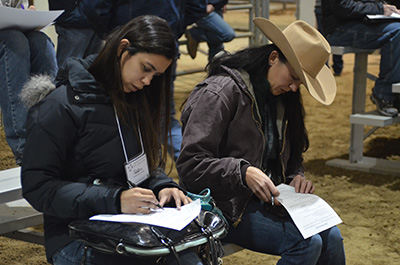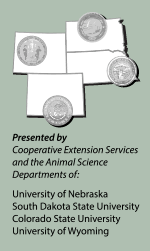Always Getting Better
Beef Quality Assurance workshop gives cattlemen education for continual improvement.
LOVELAND, Colo. (Nov. 16, 2015) — The cattle industry is not static, and cattlemen can always get better. The national Beef Quality Assurance (BQA) program’s goal is to raise consumer confidence through offering proper management techniques and a commitment to quality within every segment of the beef industry. BQA coordinators for Nebraska, Colorado, South Dakota and Wyoming certified more than 100 people before the Range Beef Cow Symposium (RBCS) in Loveland, Colo., Nov. 17-19.
The beauty of BQA is that it isn’t a mandatory program; it is an education program and shows just how many progressive cattlemen there are, said Tracey Walsh, director of industry relations for South Dakota BQA. BQA helps ensure to consumers that their beef was raised in the best possible way, and it has evolved from just addressing injection-site lesions.

BQA certification
With antibiotics being a hot topic, Nebraska BQA Director Rob Eirich addressed tips to enhance antibiotic stewardship. Antibiotic stewardship is not a new topic for BQA-certified cattlemen. BQA has addressed it since the 1980s, said Eirich.
He urged cattlemen to have written protocols for antibiotic use, for both treatment and prevention. Antibiotic resistance comes more from treatment than prevention. With changes due to the veterinary feed directive (VFD) and changes in drug development, written protocols are incredibly important, though it can be as simple as in a smartphone note or the calving red book.
Be cognizant of animal health labels, especially active ingredients, use and dosage, withdrawal times, storage, expiration date, and lot number. An additional digital resource available (both as a website, www.bayer.naccvp.com and a smartphone app) is the Compendium of Veterinary Products, he said.
Needles need to be clean, sterile and the correct size to be effective.
“Don’t use antibacterial soap to clean syringes; use hot water to sterilize them instead. The antibacterial soap will counteract the antibiotic or vaccine,” he explained.
Never put used needles back in the bottle to refill, emphasized Eirich. It’s worth a 5¢ needle to prevent a sick calf.
Recordkeeping is important, he stressed, recommending records be kept for three years. Necessary records include health-product inventory, processing records, treatment records, withdrawal times and maximum residue levels, feedstuff inventories, and feed additives.
Libby Bigler, Colorado BQA state coordinator, explained some of what producers can expect with the VFD. Only antibiotics administered by feed or water will be affected, not injectables. Additionally, only medications that are considered medically important to humans will be affected. The only current drug affected for cattle is tilmicosin. In January 2017, affected cattle-relevant drugs will include neomycin, tylosin, virginiamycin, chlortetracycline and oxytetracycline.
VFDs will also enforce a veterinary-client-patient relationship (VCPR). Veterinarians will determine the dose within label options, the number of cattle to which the drug can be administered, the amount purchased, duration of use, and the expiration date of the VFD, Bigler explained.
The VFD will require more paperwork that the producer, veterinarian and feedmill will have to keep for two years. This also means that some forward thinking will be needed to get any feed or water additives to get the paperwork in order first.
Steve Paisley, Wyoming BQA state coordinator, suggested some BQA tips for working chuteside. Recognize flight zones, pressure and release, and balance, he said. When working cattle, use visual driving aids instead of noise aids like rattle paddles. When administering injections in the neck, he reminded cattlemen to stay away from the nuchal ligament because it raises and lowers the head and can cause discomfort if injected.
For disposing of sharps, Paisley said the university is required to use biological canisters, which can be ordered. He suggested making a homemade sharps container out of a laundry detergent bottle. It’s more durable than a milk jug, he noted. If the container is puncture-proof, it can be thrown away in the trash.
When working cattle in the chute, he recommended using nonslip flooring whenever possible for the animals’ welfare and those working cattle. Adding padded working areas next to the chute can take care of the people working with you.
Editor’s Note: This summary was written under contract or by staff of the Angus Journal®, which retains the copyright. To request to reprint this article, contact Shauna Rose Hermel, editor, at 816-383-5270. PowerPoints are posted with permission of the presenter and may not be reproduced in whole or in part without the express permission of the presenter. Angus Journal claims copyright to this web site as presented. We welcome educational venues and cattlemen to link to this site as a service to their audience.
The Angus Journal's coverage of the event is made possible through collaboration with the event committee and sponsorship of LiveAuctions.tv. For questions about this site, or to notify us of broken links, click here. Look for additional coverage in the Angus Journal, the Angus Beef Bulletin, the Angus Journal Daily, the Angus Beef Bulletin EXTRA and Angus TV.


